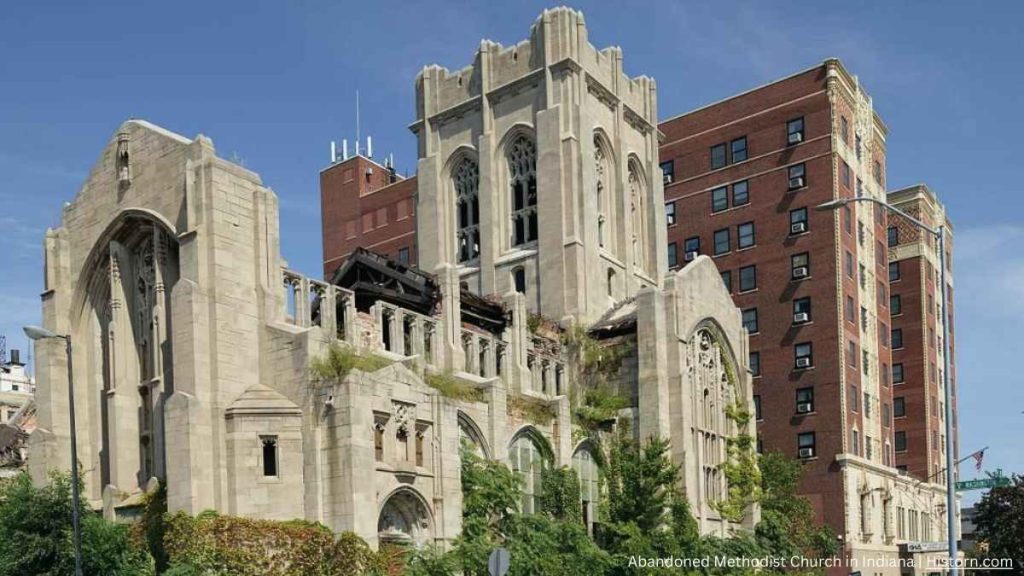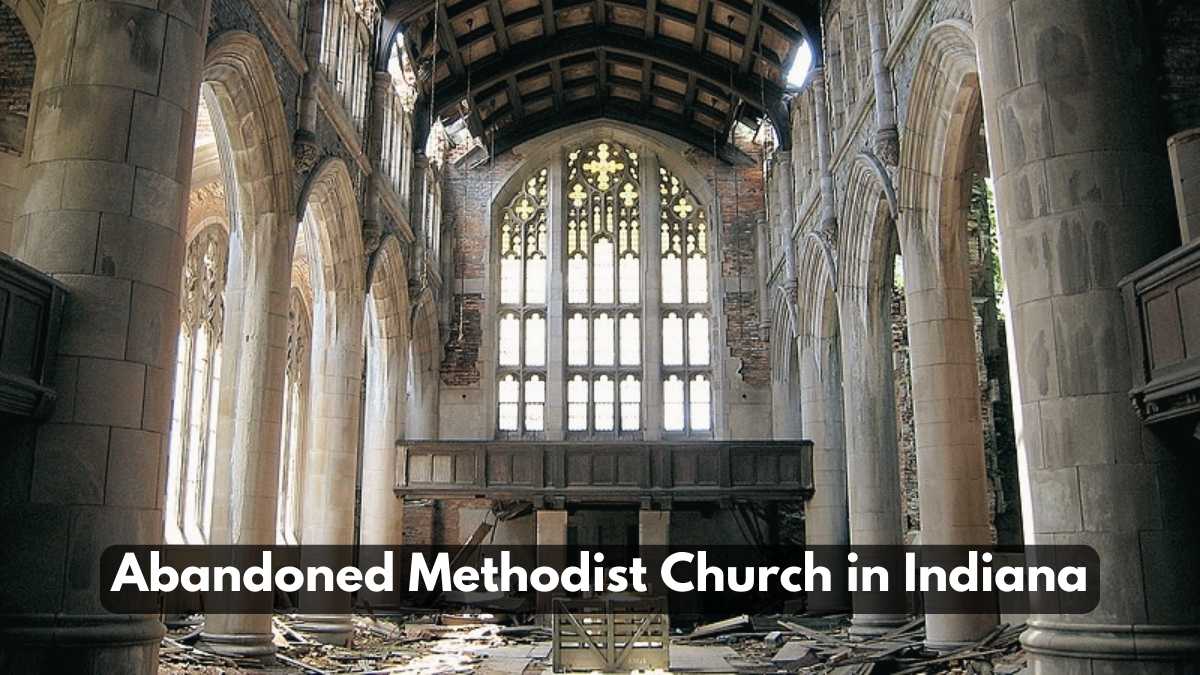Once a majestic symbol of faith and community, the City Methodist Church stood tall in the heart of Gary, Indiana. Its grandeur echoed through the empty streets, bearing witness to a bygone era when the city thrived. However, as time passed, the church fell victim to the shifting tides of urban decay.
In its heyday, the City Methodist Church was a hub of activity. Families gathered on Sundays, filling the pews with their hopes, dreams, and devotion. The sound of hymns reverberated through the lofty arches, lifting spirits and providing solace to troubled souls. Weddings, christenings, and funerals unfolded beneath its stained glass windows, as the community leaned on the church in times of joy and sorrow.
Yet, as the years went by, the fortunes of Gary took a turn for the worse. Industries declined, jobs vanished, and families moved away in search of better opportunities. The once-bustling streets became deserted, leaving behind a desolate cityscape. The City Methodist Church could not escape this downward spiral. It closed its doors, its spiritual light extinguished, and the building slowly succumbed to neglect.

Nature began to reclaim the church. Ivy snaked its way up the weathered walls, wrapping the structure in an embrace of greenery. Crumbling brickwork and broken windows became a canvas for graffiti artists, their vibrant tags contrasting against the church’s fading glory. The echoes of the past lingered in the air, but the church stood abandoned, a forgotten relic.
Despite its forsaken state, the City Methodist Church became an unexpected muse. Photographers, filmmakers, and artists ventured into its hollowed halls, capturing its haunting beauty and infusing it with new life through their creative lenses. The church became a symbol of resilience, a testament to the strength of the human spirit.
Visitors would walk through the decaying entrance, their footsteps echoing in the empty nave. Sunlight streamed through the fractured windows, casting ethereal patterns on the worn floorboards. The hushed whispers of the past seemed to whisper secrets, lost to time, inspiring a sense of awe and wonder.
The city itself began to rally around its forgotten landmark. Community organizations, history enthusiasts, and preservationists banded together, determined to save the church from further decay. They organized fundraisers, seeking to breathe new life into the crumbling walls and revive the spirit of the City Methodist Church.
Their efforts bore fruit, and the church found a new purpose. It was transformed into a cultural center, a haven for the arts, and a gathering place for the community. Its walls once again resounded with music, laughter, and heartfelt conversations. Artists showcased their creations, and performers graced the stage, restoring the church’s role as a beacon of culture and connection.
The abandoned City Methodist Church, once on the brink of oblivion, had found redemption. It stood not only as a reminder of a bygone era but as a symbol of resilience and rebirth. Through the collective efforts of a community unwilling to let its history fade away, the church embraced a new chapter in its storied existence.
You May Also Like:




Leave a Reply